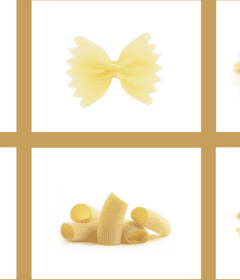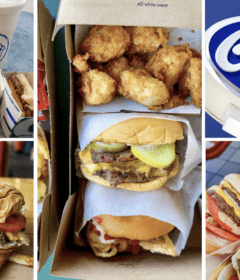All About Steak
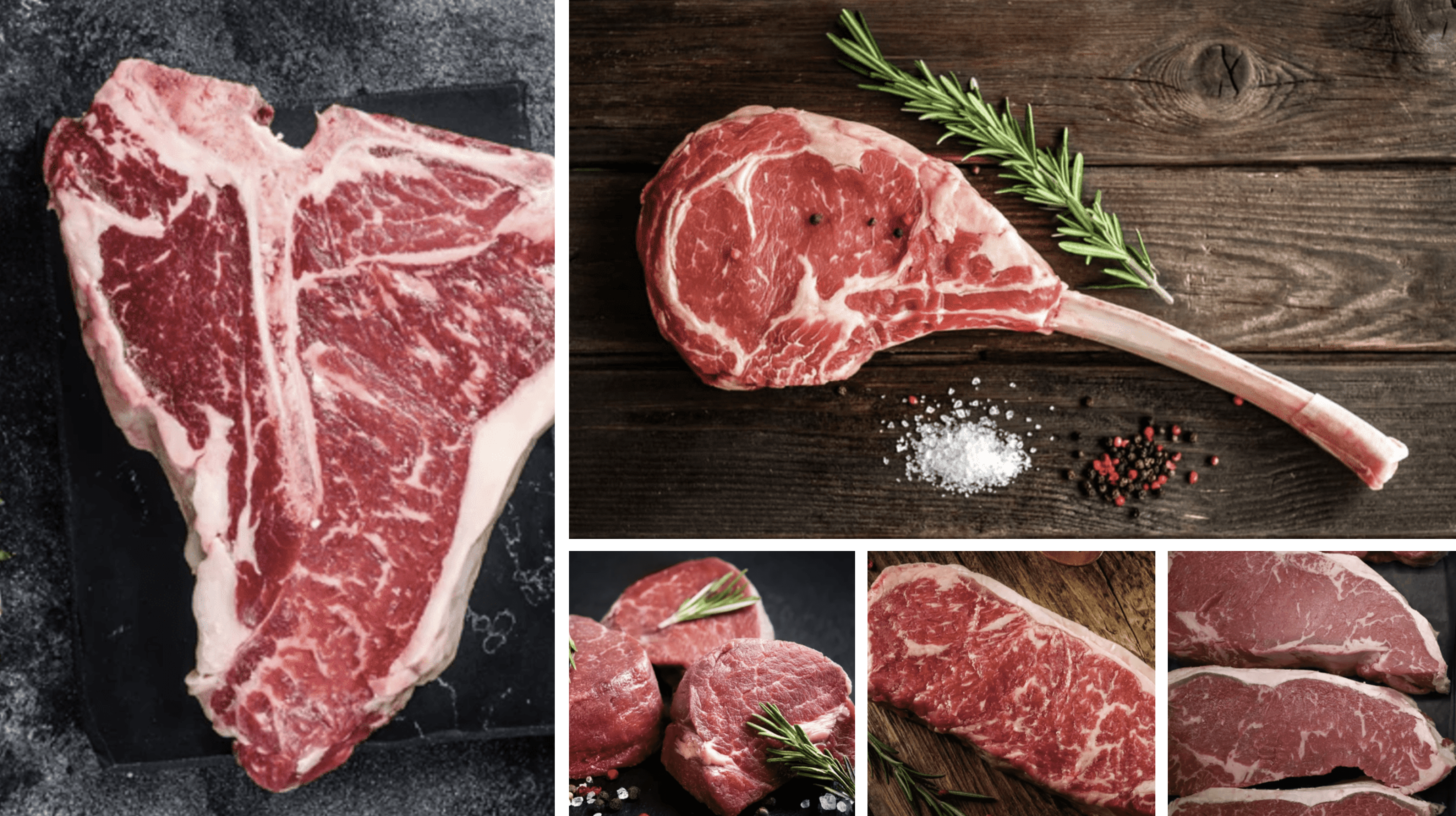
All About Steak – The butcher counter can be overwhelming, filled with what seems like countless options but very little information.
While there is no such thing as the best cut of steak (it is really all about your preferences and how you are preparing it), there are a few cuts that are widely considered top tier.
Below, we get into the meaty differences, as well as how to choose the right cut for what you’re cooking.
The best cuts of meat are all found running down the back of the cow, far away from what butchers call the “hoof and horn.”
Cuts that are closer to the legs and shoulder get a lot of exercise, as they help support the cow’s movements, which strains the muscles and results in tougher cuts of beef.
That’s why brisket and beef shanks need to be braised low and slow – to help soften up those connective tissues.
Cuts that run along the back, like ribeye, strip, tenderloin and T-bone don’t work as hard, so they are much more tender and perfect for a steak dinner.
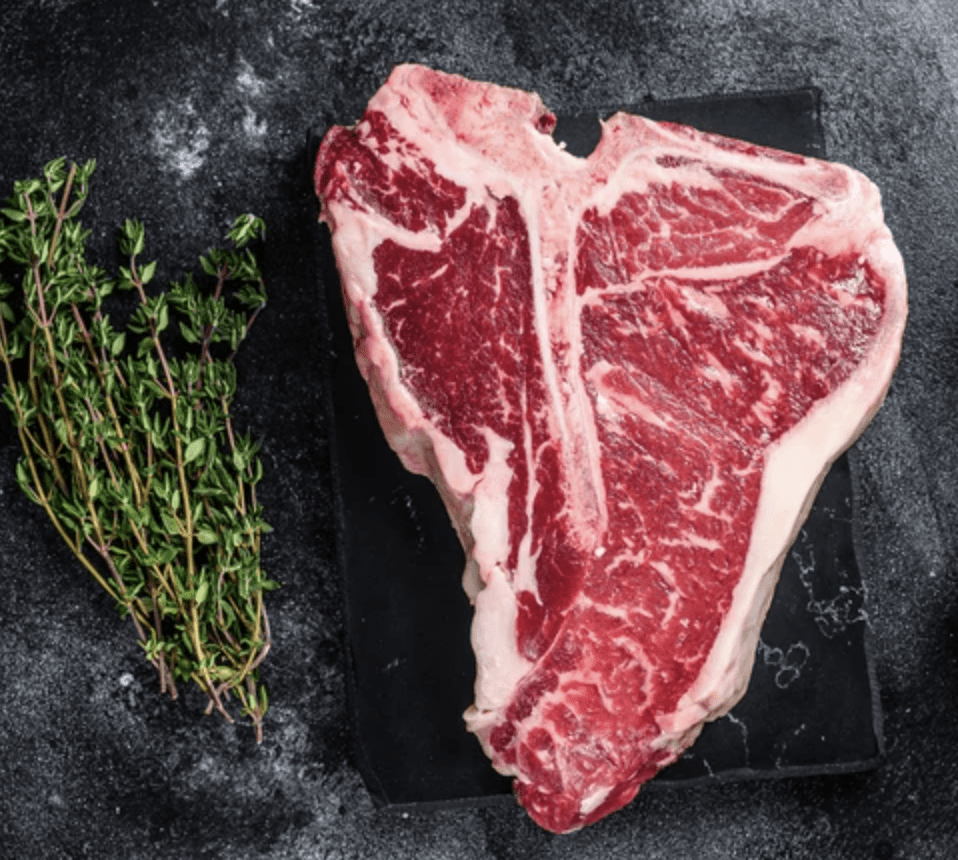
All About Steak – Porterhouse
This steak is a huge T-bone with a larger tenderloin section.
It is cut farther back on the animal than the T-bone.
Like the T-bone, it has well-balanced flavor and texture.
Most porterhouse steaks can serve two.
How to Cook It
Cook a Porterhouse over dry heat as you would a strip loin, using a meat thermometer if you need to make sure the thick steak cooks through.
After it rests, cut the meat from the bone in two pieces, slicing each one perpendicular to the bone.
Then, replace the slices around the bone so it looks like a whole steak for presentation purposes.
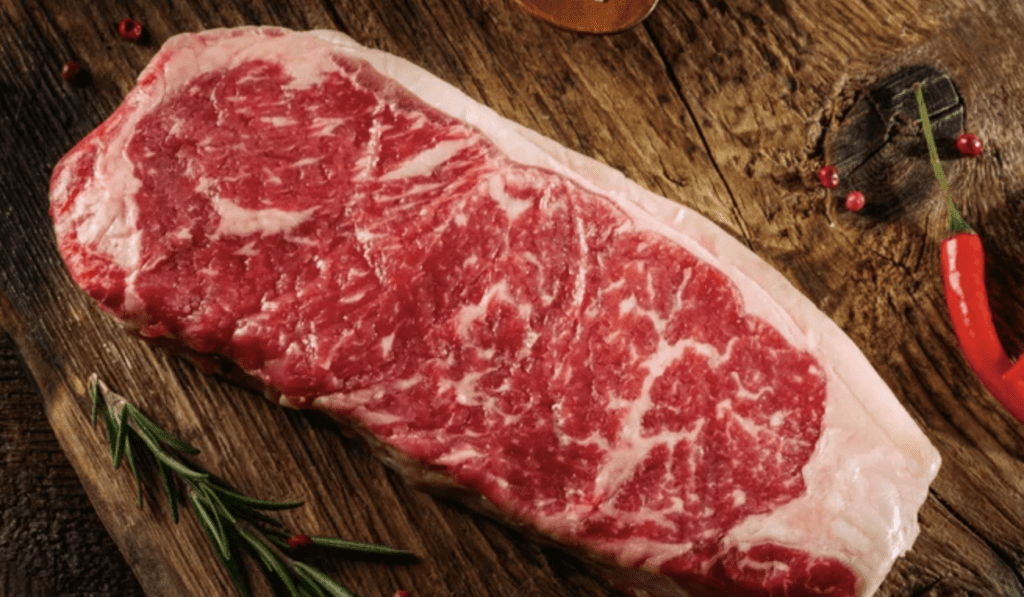
All About Steak – KC, NY
Available both boneless and bone-in, this moderately expensive steak is also called top loin, shell, sirloin, Kansas City, and New York.
Cut from the middle of the steer’s back, strip steaks are well-marbled, with a tight grain, pleasantly chewy texture, and big beefy flavor.
How to Cook It
Prepare a strip the same way you would a ribeye: seasoned with salt or a dry rub, and cooked over dry heat like in this cast-iron skillet recipe.
These taste best in the medium-rare to medium range.
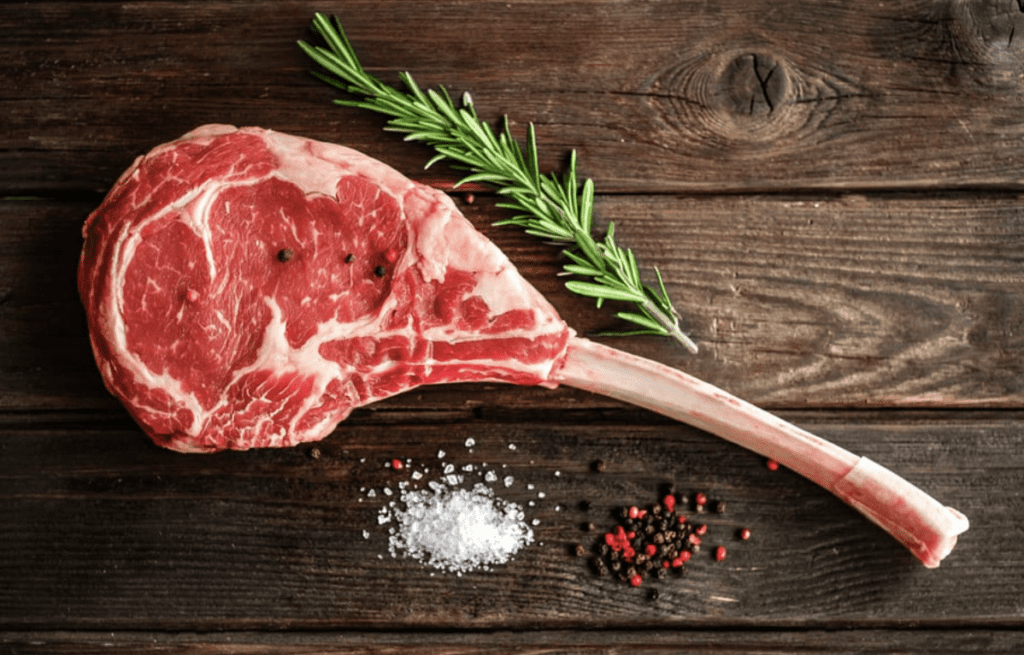
All About Steak – Tomahawk
This Flintstone-looking cut is basically a ribeye that wasn’t cut off of the rib bone.
It’s thickness depends on the thickness of the bone, but they’re generally in the neighborhood of two inches thick.
They also weigh enough to feed several people.
How to Cook It
They look intimidating, but you just need to know how to cook a thick steak to pull it off.
It’s best to sear a tomahawk steak in a cast-iron pan or over the hot side of the grill.
Then, finish cooking them in the oven or on the indirect heat side of the grill.
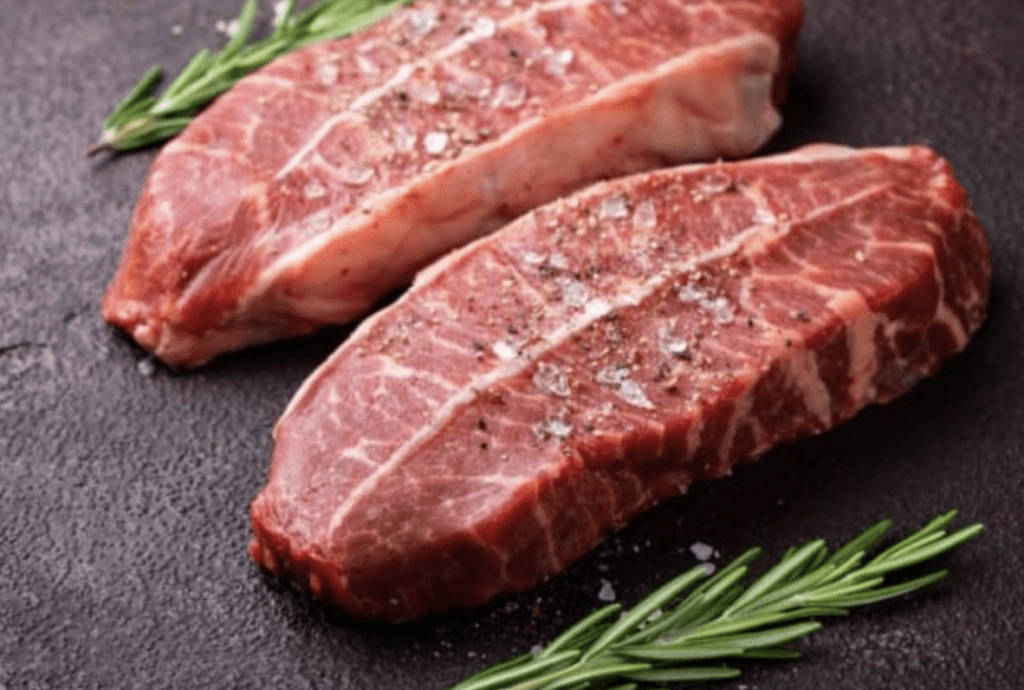
All About Steak – Top Blade
A small shoulder cut, top blade (or blade)is very tender and richly flavored, with a line of gristle that runs through the center.
Remove the gristle and slice the meat thin for stir-fries, or cut into cubes for kebabs or stews.
Blade, sometimes called top blade, is cut from a muscle in the beef chuck primal cut, specifically the top blade (or infraspinatus) muscle.
The chuck primal cut can be divided into two sections: the chuck roll and the chuck shoulder clod.
How to Cook It
Heat oil in a 12-inch heavy skillet over moderately high heat until hot but not smoking, turning over once, until meat is just medium-rare, 4 to 6 minutes total.
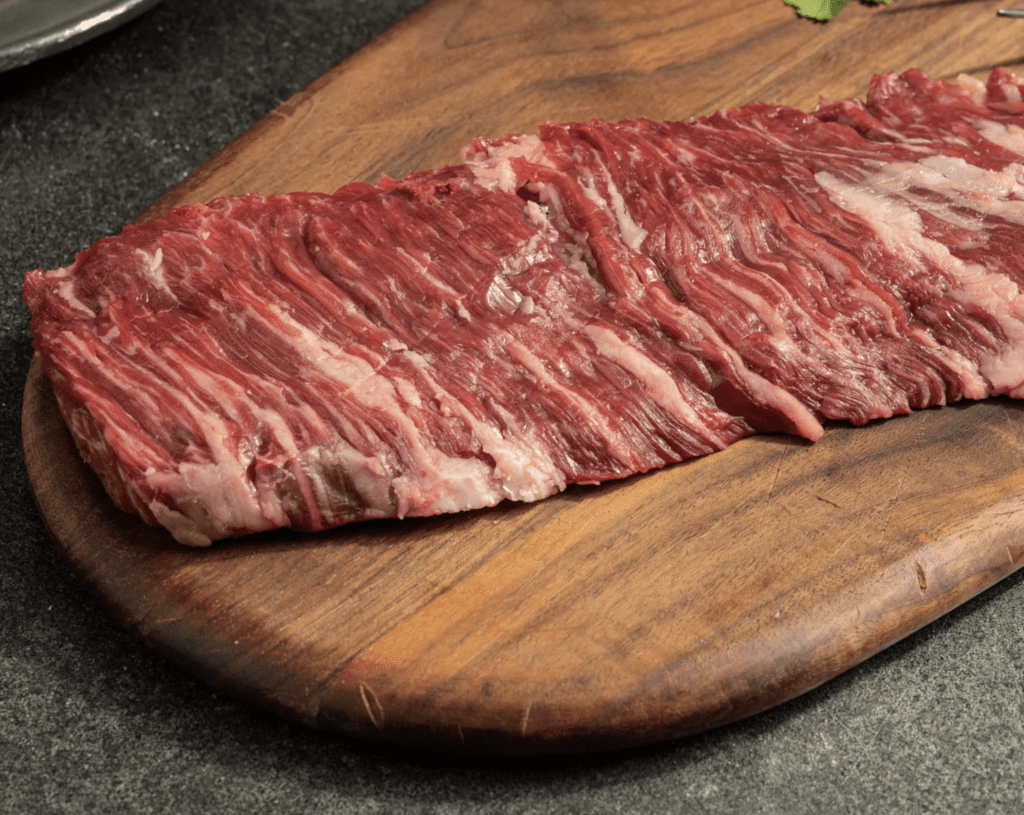
All About Steak – Skirt
This long, thin steak is cut from the underside of the animal.
Also known as fajita or Philadelphia steak,
it has a distinct grain and an especially beefy taste.
Sliced skirt is a good option for fajitas, but it can
also be cooked as a whole steak.
How to Cook It
It’s best to marinate a skirt in an acidic marinade like the one in this grilled skirt with red peppers and onions recipe for at least 30 minutes before cooking it.
Then, flash sear it over high heat and serve it medium-rare to medium.
It’s important to cut the skirt against the grain to avoid chewy bites.
If you have any leftovers, slice or grind it up for a delicious cheesesteak.
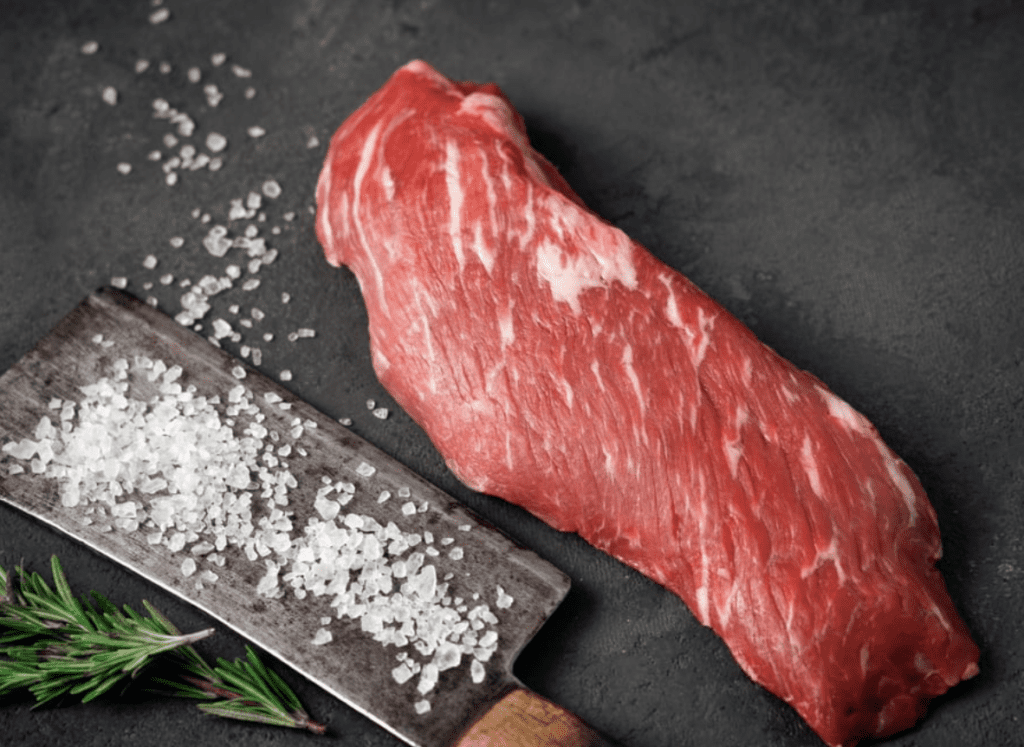
All About Steak – Top Sirloin
Cut from the hip, this steak (along with its bone-in version, round-bone steak) is sometimes called New York sirloin, shell sirloin, or sirloin butt.
It is a large, inexpensive steak with decent tenderness and flavor; do not confuse it with the superior strip steak.
Slice thin against the grain after cooking.
How to Cook It
Because the sirloin doesn’t have much fat or inter-muscular marbling, you’ll want to take care not to overcook it.
Any temperature over medium will taste dry.
These taste fantastic when dressed up with a dry rub in recipes like zippy sirloin.
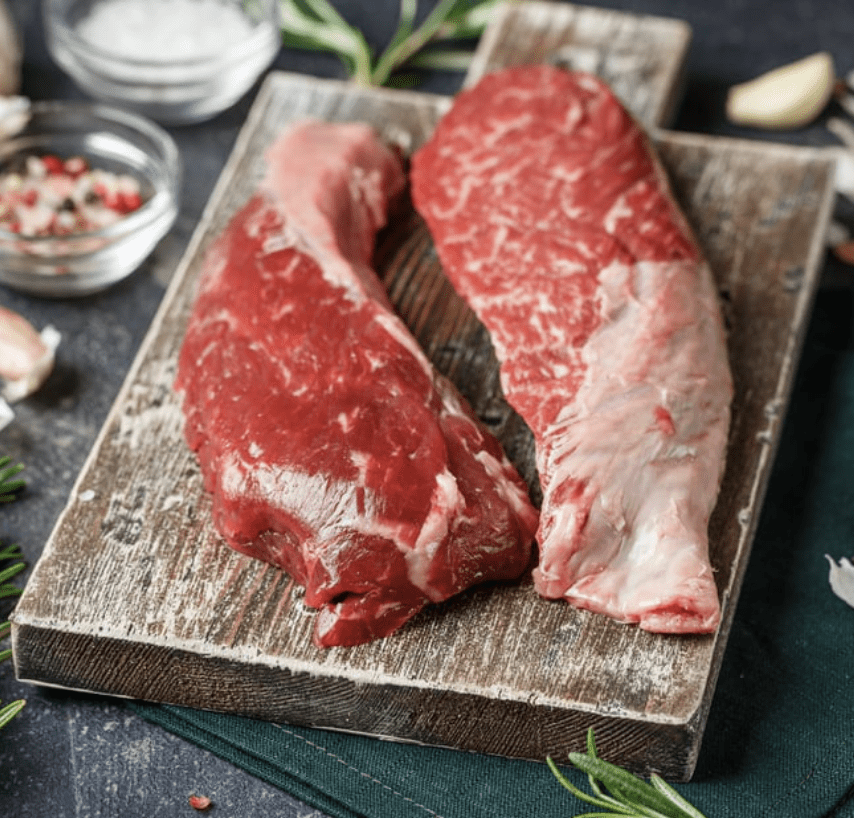
All About Steak – Flap Meat Sirloin Tip
Cut from the area just before the hip, this large steak is most often sold in strips or cubes.
Though not particularly tender, flap meat has a distinct grain and a robust beefiness.
Buy the whole steak and cut it yourself.
Slice thin against the grain after cooking.
Flap meat doesn’t necessarily sound appetizing, but it’s an affordable, versatile cut that tastes great.
Sometimes called sirloin flap, this cut comes from the very bottom of the sirloin close to where it meets the flank section.
How to Cook It
You can use flap in any recipe that calls for skirt or flank. It’s best when seasoned with a marinade, cooked over high heat and served around medium temperatures.
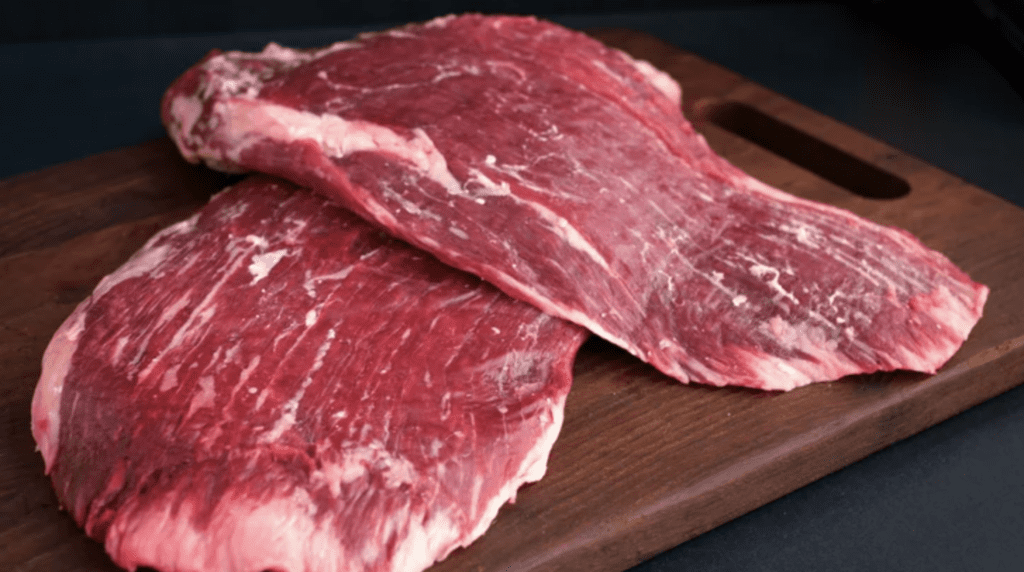
All About Steak – Flank
Flank is a large, flat cut from the underside of the cow, with a distinct longitudinal grain. Flank is thin and cooks quickly.
Although very flavorful, flank is slightly chewy.
It should not be cooked past medium and should always be sliced thin across the grain.
How to Cook It
Like skirt, it’s best to use a flavorful marinade and cook flank over high heat.
It can become tough when cooked over medium, and we think it tastes best at medium-rare.
For the best eating experience, thinly slice flank against the grain.
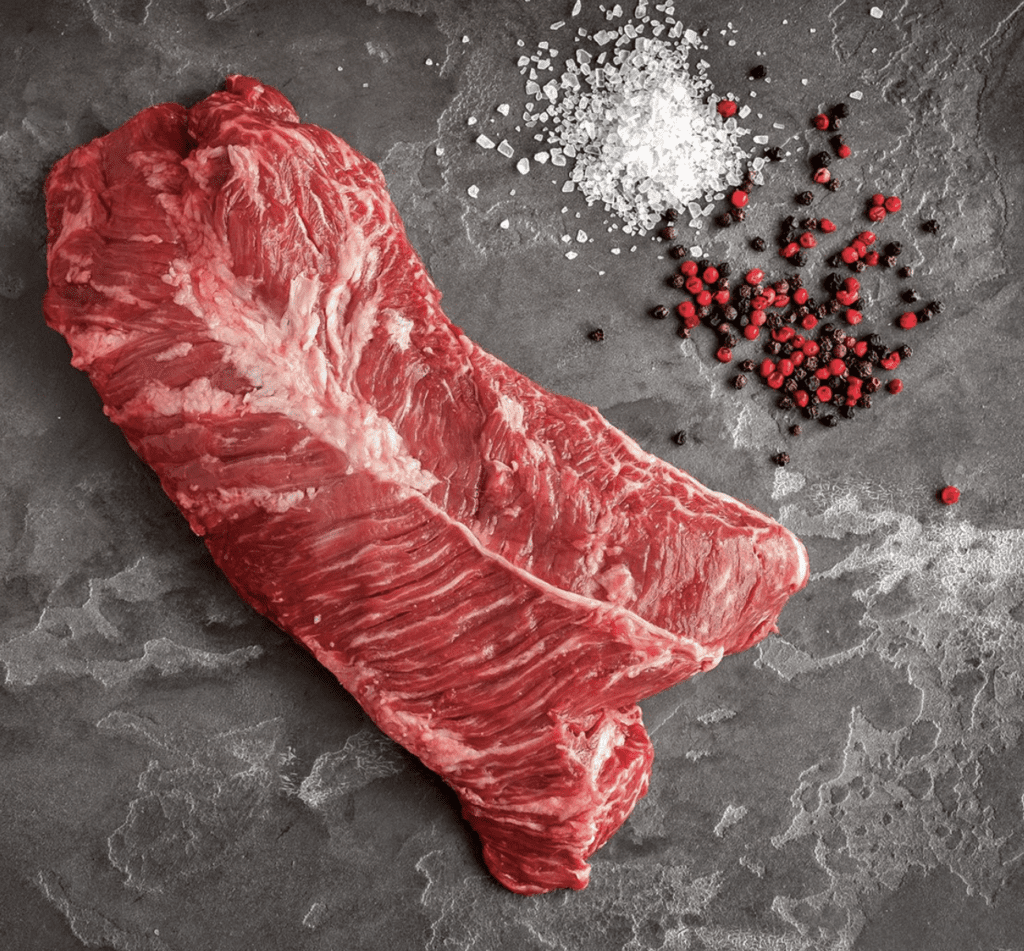
All About Steak – Hanger
Hanger is one of the best cuts of beef you didn’t know you could ask for.
It’s relatively inexpensive and has a super beef-forward flavor.
It comes from the plate or belly section of the cow, but it’s not connected to any bones. (It hangs from the diaphragm, hence the nickname “hanging” steak.)
If you’re buying a whole hanger, ask the butcher to remove the thick, inedible membrane that runs down its center.
How to Cook It
Remember: high heat is key.
Place the steaks on the grill and cook for about two minutes on each side.
Use a meat thermometer to ensure that your temperature is between 125 and 130 degrees Fahrenheit.
If so, remove them from the grill and allow them to rest for 5 to 10 minutes.
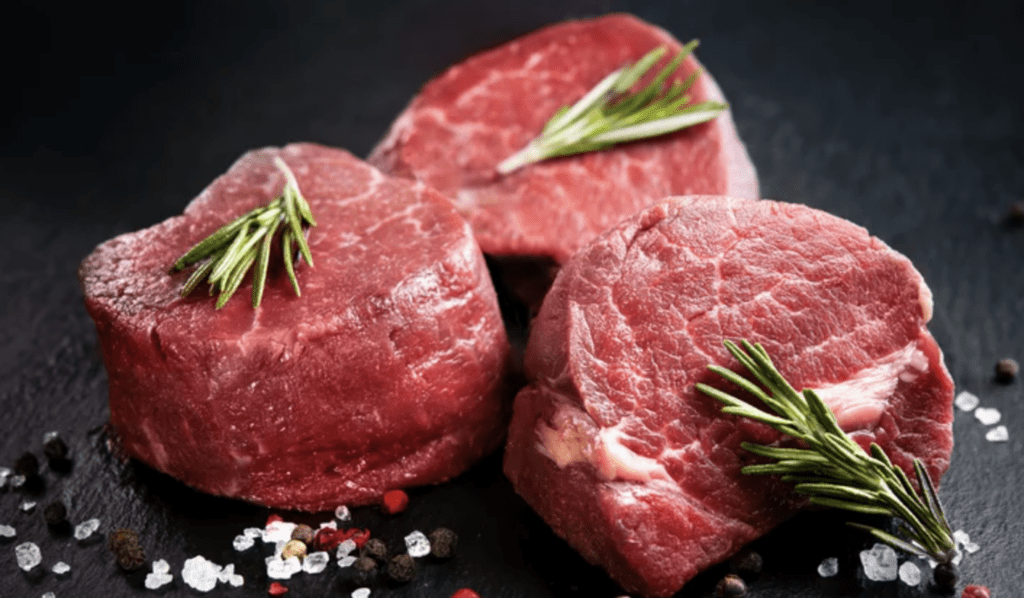
All About Steak – Tenderloin
Cut from the center of the back, buttery-smooth tenderloin is the most tender and most expensive cut on the cow, but it has little flavor.
These steaks may be labeled (from thickest to thinnest) – Chateaubriand, filet mignon, or tournedos.
How to Cook It
There’s almost no fat content, so you definitely don’t want to overcook them, or they will dry out.
Simply dress the filet up with salt, pepper and any herbs you like.
Add a fat like butter, bacon or duck fat to bast for extra flavor.
Then, cook it in a cast-iron skillet until it reaches a rare or medium-rare temperature.
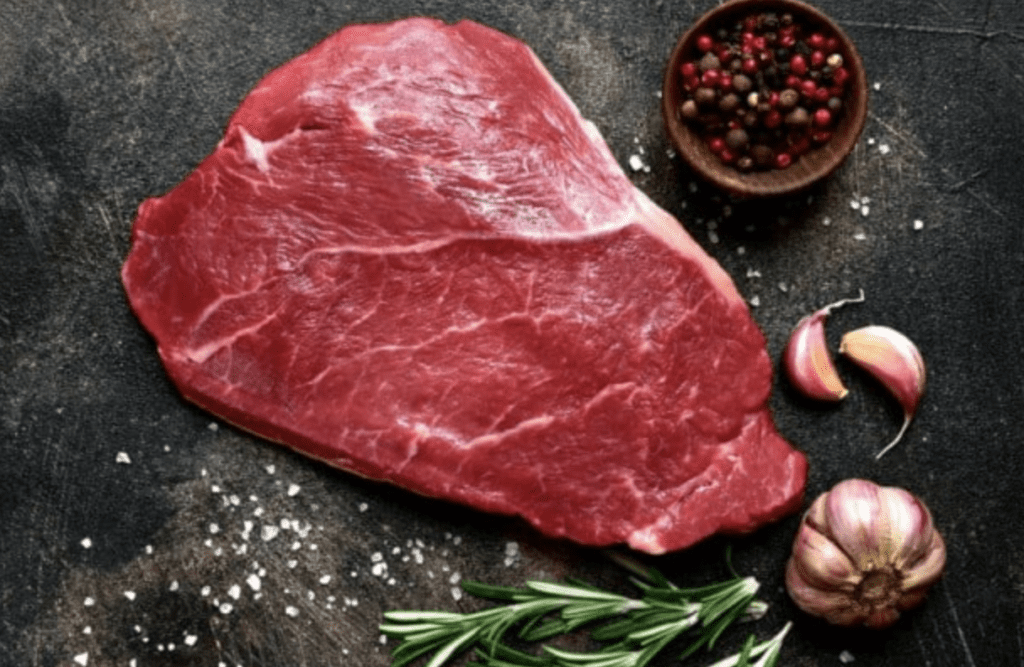
All About Steak – Shoulder
Sometimes labeled London broil or chuck steak, this larger boneless steak is a great value.
It is relatively lean with a moderately beefy flavor.
It can be a bit tough; slice it thin on the bias after cooking.
How to Cook It
Cook shoulder by braising.
Braising a cut of beef involves browning the meat in a small amount of fat, adding a liquid like water or broth, then covering the pan and allowing the cooking process to finish over low heat.
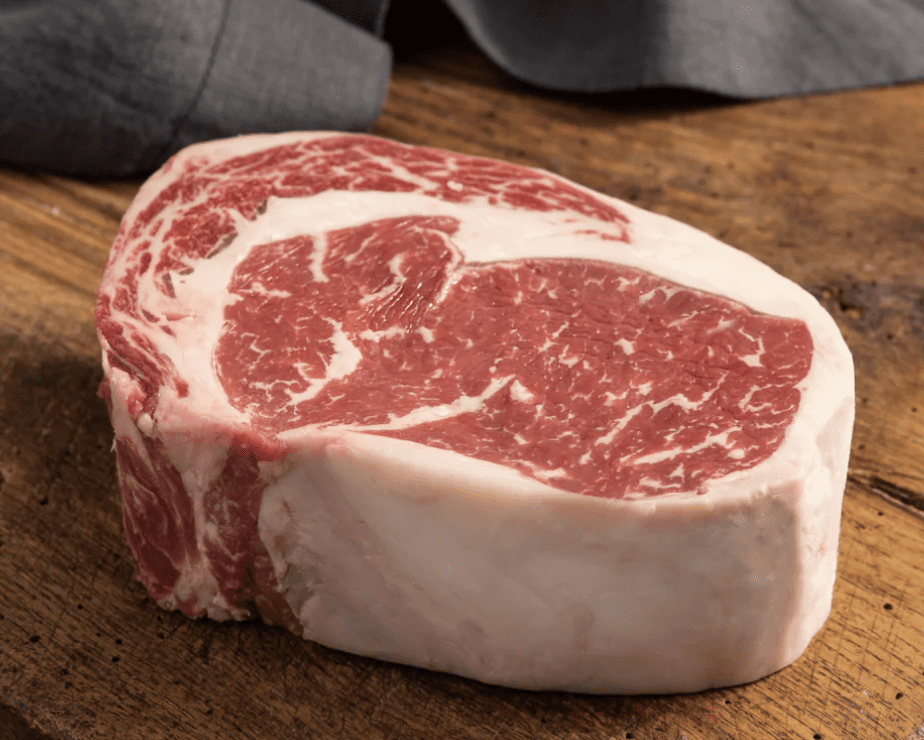
All About Steak – Rib-Eye
Cut from the rib area just behind the shoulder, a rib-eye (aka Spencer or Delmonico steak) is essentially a boneless slice of prime rib.
This pricey, fat-streaked steak is tender and juicy, with a pronounced beefiness.
How to Cook It
You won’t need to marinate because of its fat content, and we like using a simple salt-and-pepper rub that doesn’t cover up the beefy flavor.
Cook ribeye over dry heat—like a grill or a cast-iron pan—until it reaches your desired temperature.
Try this recipe for peppered ribeye that enhances the natural flavor without covering it up.
Thawing Steaks Quickly
After one hour, steaks left on wood and plastic cutting boards were still frozen solid, those on aluminum baking trays had thawed slightly more, and meat left on heavy skillets were almost completely thawed.
Metal contains a lot of moving atoms, allowing it to transfer ambient heat much more quickly.
To thaw, place them, wrapped, in a skillet in a single layer.
Flip every half hour until thawed.
Temping Steaks
The most accurate way to judge when meat is done is by using an instant read thermometer.
Hold the meat with tongs and push the thermometer through to the center.
To make sure the thermometer is deeply embedded in the the meat, take the temperature from the side.
Avoid touching the bone with thermometer, if applicable.
Remove the steak from the heat when it registers 120 degrees for rare, 125 or medium-rare, 135 – 145 degrees for medium and 155 degrees for well-done.
In general, the temperature will increase another 5 degrees as it rests.
Steaks to Avoid When Cooking Indoors
Bone in Steaks
Bones add great flavor, but they prevent steaks from keeping direct contact with a pan.
They are fine for grilling, but when pan-searing, stick with boneless cuts that will rest flush with the pan.
Big Steaks
Extra-thick steaks are hard to cook through in a skillet (save them for grilling). When pan-searing, buy steaks that are 1 to 1 1/4 inches thick.


